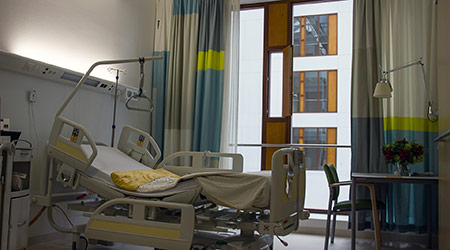No one enjoys going to the hospital. That’s a fact. No matter how hard we try to make the experience less stressful for the patients, we cannot eliminate the stress factor. That doesn’t mean we shouldn’t try as much as possible.
Old hospitals that smell like sickness should be part of the past. Millennials, the generation that’s pushing the health industry to change, have demands that hospitals have to meet. Those changes are not only focused on finances. Millennials also need a friendlier approach that would make them feel more comfortable in hospitals. The design is part of the efforts to deliver what these patients expect.
Barry Rabner, Princeton Healthcare System CEO, expressed the overwhelming challenge this generation imposes on healthcare: “If they could go into a phone booth, pull their shirt up and put their chest against the wall and get a heart transplant, they would do it. If they never have to talk to a doctor or a nurse and show up at the hospital at 3 a.m. so they don’t have to miss work, they couldn’t be happier.”
So the Millennials are looking for two things: technology and availability. These two elements have to be part of the hospital design.
This guide may be a message to healthcare experts, architects and everyone else involved in the process of designing hospitals for the Millennial generation.
How to Design Hospitals for Millennials
1. Get Input
According to the Hospital Construction Survey 2017, 95% of healthcare organizations are listening to the staff during the design phase of renovation and new construction projects. That’s a huge step forward!
Good designs are never being developed in a vacuum. It takes a lot of feedback from the staff at the facilities, so you’ll understand what exactly the patients are looking for. Feedback from actual patients would be even more appreciated. Thanks to SurveyMonkey and similar tools, it’s easy to create a survey and spread it around. The response you get from local Millennials will be a guiding point in the design.
If no one from the team involved in the design process has experience with creating and analyzing surveys, the writers from essaygeeks.co.uk service can help.
2. Mock-Ups Should Also be Part of the Process
The same survey also showed that hospitals are increasingly using mock-ups, so they would boost the efficiency of the workflow. 55% of the respondents said they were testing live mock-ups. That’s a huge increase from the 26% we saw in 2016.
What does this mean, exactly? A mock-up can be anything from a cardboard model to life-size 3D model. It’s not the real product, but it shows how the final design would look like.
Architects from all industries are already using virtual reality big time, so it’s about time they start introducing it into hospital design as well.
3. We Need to Respect the Patients’ Need for Privacy
Yes; Millennials are a pretty communicative generation. Yes; most of them will share details about their health condition on social media. But yes; they would still want some privacy when visiting hospitals. Millennials don’t want just any kind of communication; they want it to be efficient. This means that they won’t like getting information from irrelevant staff or other patients. They want zoned rooms and departments, where they can communicate with the right person and get to an effective solution as quickly as possible.
This can be solved by introducing separate, well-design areas where the patients will get exactly what they need without being distracted.
4. Technology Is Crucial
Millennials would love walk-in appointments without much waiting involved, since they don’t have any time to waste. When they do have to wait for their appointment, they would still want to use that time as well as possible. That’s when they will turn to their mobile apps. At this point, they need the connectivity in the building to be impeccable.
That’s not where a Millennial’s needs for technology end, though. They will expect technology to be seamlessly integrated into the entire healthcare experience. They would love to see digital check-in kiosks and displays that enable them to choose the service they need. The older patients will probably consider these features excessive, so the hospital will have to preserve the previous system for a while. The hospital design of the future, however, is aimed at introducing more technology. There’s absolutely no reason to postpone the digital revolution in the healthcare industry.
This generation has a great impact on all industries, and healthcare is no exception. We must redesign the old concepts and adjust them to the demands of Millennials. The good news is that these demands are pushing us to work harder and better towards improvement of hospital design.
Chris Richardson is a journalist, editor, and a blogger. Follow him on Google+.

 Grounding Healthcare Spaces in Hospitality Principles
Grounding Healthcare Spaces in Hospitality Principles UC Davis Health Selects Rudolph and Sletten for Central Utility Plant Expansion
UC Davis Health Selects Rudolph and Sletten for Central Utility Plant Expansion Cape Cod Healthcare Opens Upper 2 Floors of Edwin Barbey Patient Care Pavilion
Cape Cod Healthcare Opens Upper 2 Floors of Edwin Barbey Patient Care Pavilion Building Sustainable Healthcare for an Aging Population
Building Sustainable Healthcare for an Aging Population Froedtert ThedaCare Announces Opening of ThedaCare Medical Center-Oshkosh
Froedtert ThedaCare Announces Opening of ThedaCare Medical Center-Oshkosh